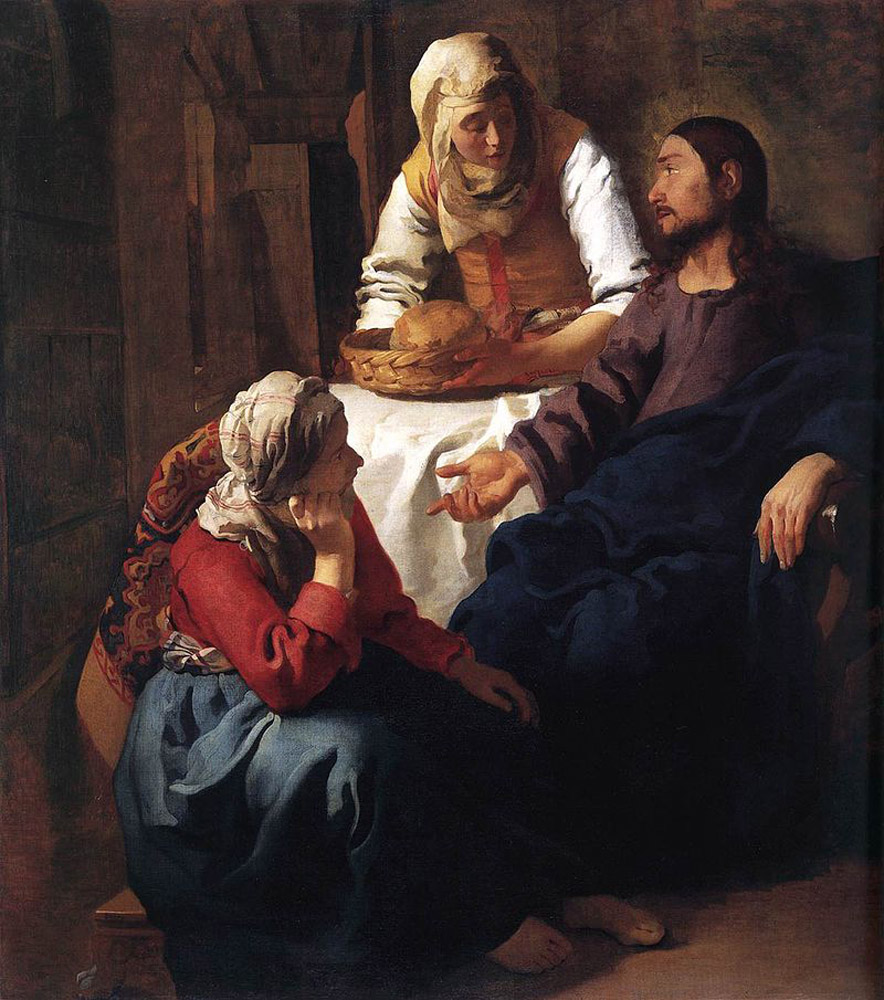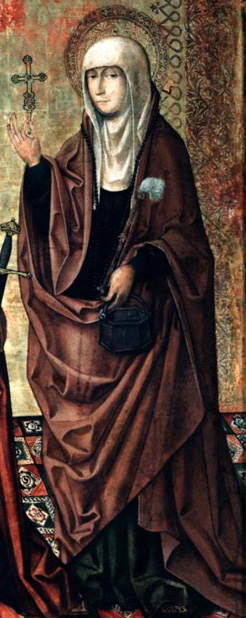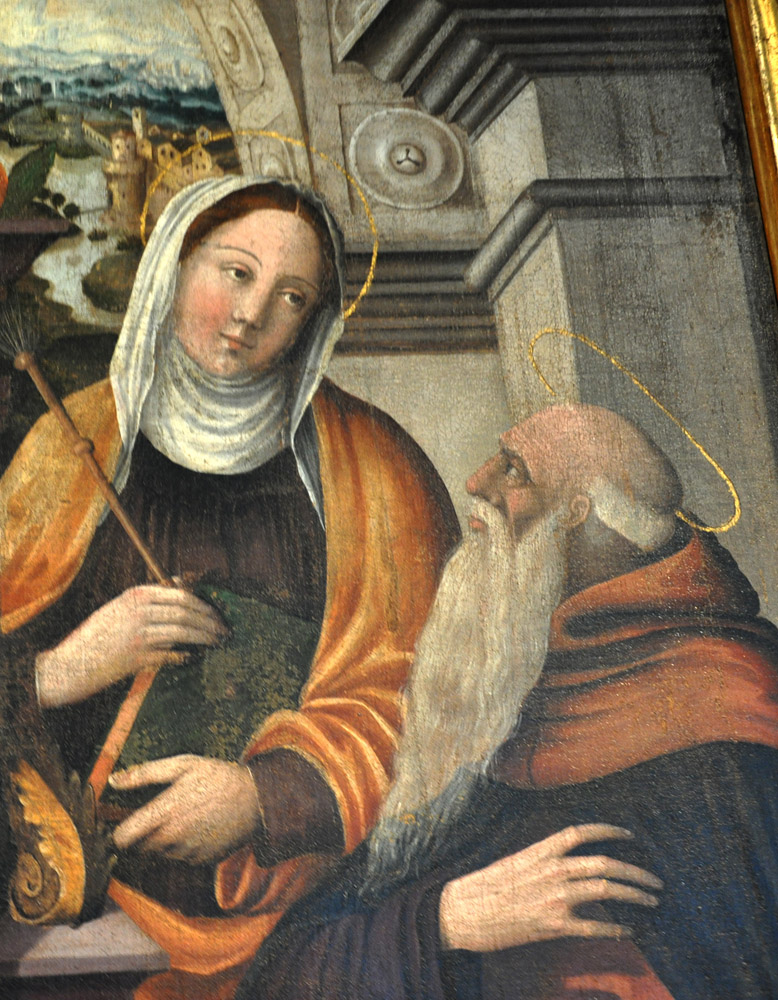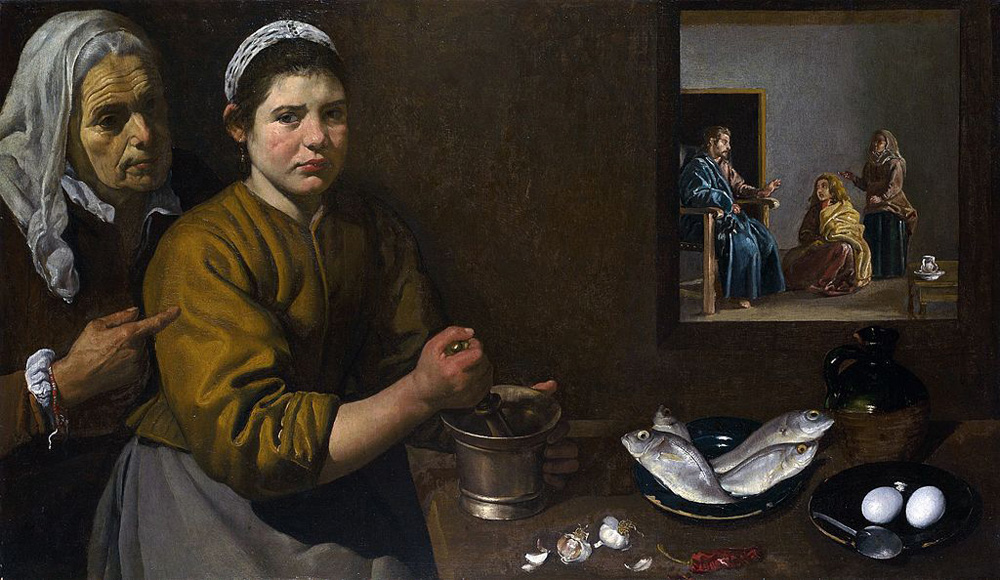Artists have had a grand time with this story. In Vermeer's subtle exegesis at right, light flows in on St. Martha from the window, while the face of her sister is more deeply shadowed, as if Martha were better off after all for having raised the question and learned the answer.
Velazquez is less subtle. In the image above he foregrounds a titanically peeved St. Martha in her kitchen, her anger compounded by advice from an old woman of the household. Behind her is an interior window giving onto the room where Mary has seated herself before Jesus, her loose hair and slovenly posture in exasperating contrast to Martha's tidy coiffure and tensed muscles. Naturally, Mary is the one with the blond hair.
Or the episode could be portrayed as a merry little misunderstanding, as in this 18th-century painting of a happy Jesus explaining things to his perky young hostesses.
The other episode is in John 11:1-44. St. Martha sends for Jesus when her brother Lazarus lies dying. By the time he arrives the man has been dead four days, but Jesus orders the tomb opened anyway. Ever the practical one, Martha objects that the body is going to stink. But then her brother is recalled to life. For images of this episode, see the page for Saint Lazarus.
The legendary material has St. Martha traveling with her brother and sister to Provence to preach the gospel (image). Hearing of a man-eating monster in the Rhône River, she seeks out the beast and paralyzes it by splashing it with holy water while holding up a cross. Then the locals finish the monster off with spears and lances. (For the origin of this story see this paragraph in our page on Mary Magdalene.)
PORTRAITS
Because of the river-monster story, St. Martha's primary attribute is a small bucket of holy water with an aspergillum and a cross, as in the second image at right. Some images also include the monster (example).Prepared in 2014 by Richard Stracke, Emeritus Professor of English, Augusta University
Diego Velázquez, Christ in the House of Martha and Mary, circa 1620 (see description page)
OTHER IMAGES

Vermeer, Christ in the House of Martha and Mary – See description page

15th century Spanish painting – See description page

With aspergillum in a 16th century Madonna Enthroned – See description page
- Aspergillum with bucket
- Hand cross
- Dragon at feet
MORE IMAGES
- 2nd half of 14th century: In a statue St. Martha holds a book quoting her affirmation of Christ's divinity in John 11:27.
- 1515-17: In Correggio's Saints Peter, Martha, Mary Magdalene, and Leonard Martha's only attribute is a dragon at her feet.
DATES
- Feast day: July 29
BIOGRAPHY
- Golden Legend #105: html or pdf.
- Roman Breviary, III, 765 (1632 Latin text: 948-49).
- Acta Sanctorum, July vol. 7, 4-13.
ALSO SEE
